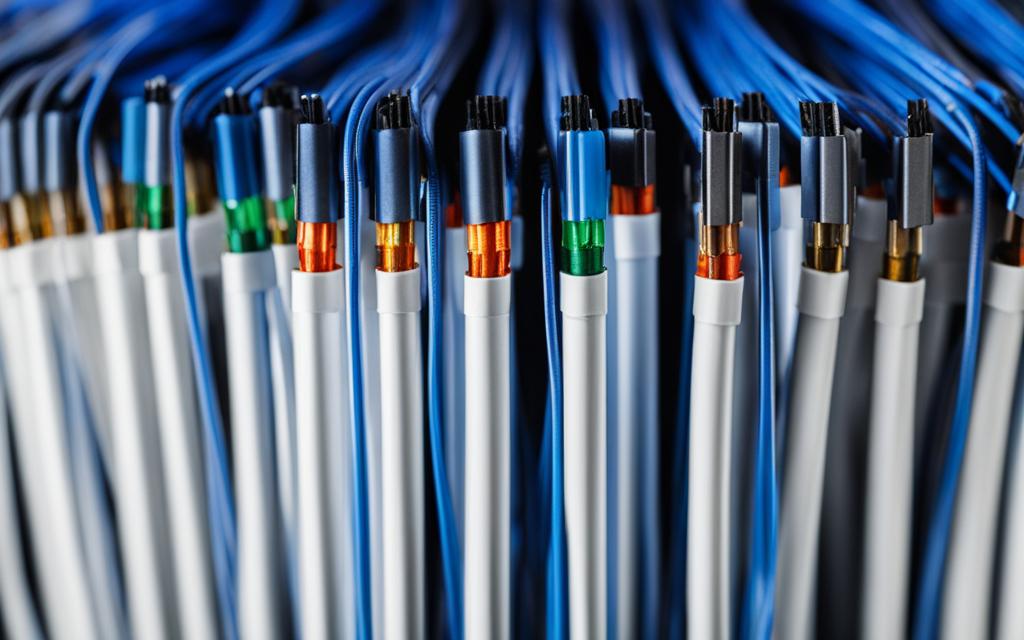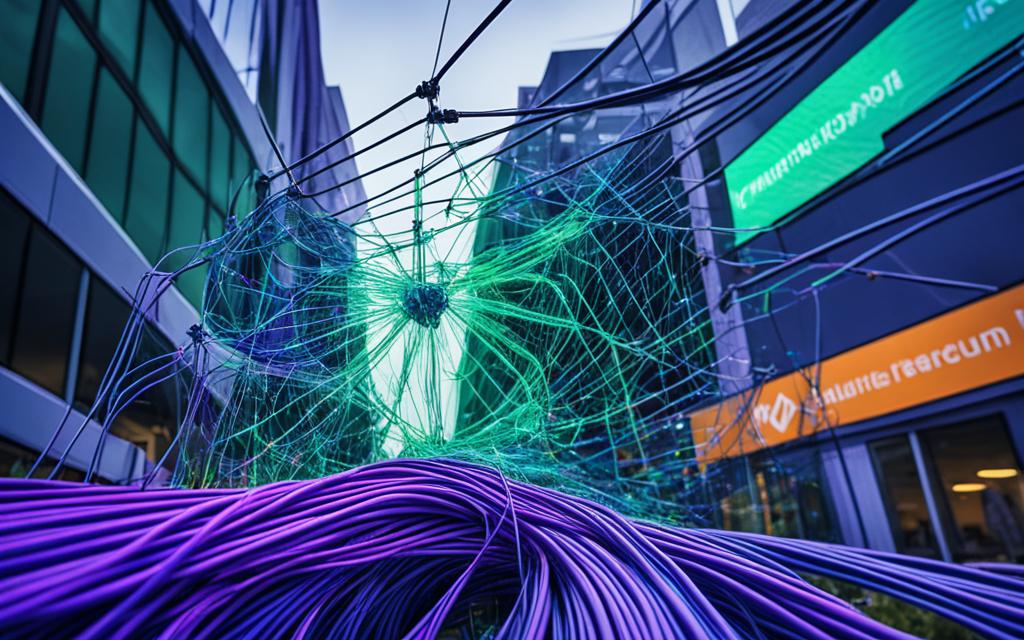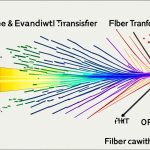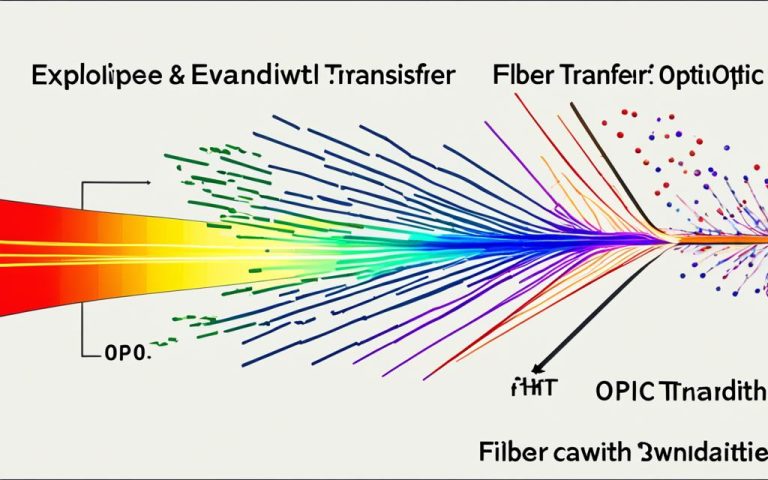In today’s fast-paced digital landscape, businesses are facing increasing demands for high-speed, reliable, and scalable networks. The emergence of advanced technologies like 5G, cloud computing, and the Internet of Things (IoT) requires network upgrades to accommodate the evolving requirements. One of the most effective solutions for network expansion and future-proofing is fiber optic network upgrades.
Fiber optic patch leads offer unmatched scalability, enhanced bandwidth capabilities, greater distance capabilities, and immunity to interference, making them an ideal choice for businesses seeking to future-proof their networks. With the ability to handle data-intensive applications seamlessly, fiber optic patch leads enable businesses to keep pace with growing network demands.
In this article, we will explore the benefits of fiber optic patch leads for network future-proofing, discuss their advantages, delve into key implementation considerations, and examine their role in supporting future trends in networking.
The Benefits of Fiber Optic Patch Leads for Network Future-Proofing
Fiber optic patch leads offer several advantages for future-proofing a network. Their superior performance and versatility make them the ideal choice for businesses looking to meet the demands of data-intensive applications and incorporate new technologies. Here are some key benefits of fiber optic patch leads:
- High Bandwidth: Fiber optic patch leads provide significantly higher bandwidth capabilities compared to traditional copper cables. With greater bandwidth, networks can seamlessly handle the increasing volume of data generated by modern applications.
- Easy Network Expansion: The lightweight and compact design of fiber optics enable easy network expansion without causing disruptions to existing infrastructure. Businesses can add new connections or extend the network reach with minimal hassle.
- Compatibility with Latest Technologies: Fiber optic patch leads are compatible with the latest Ethernet standards, ensuring seamless integration with new networking technologies such as 5G and IoT. This compatibility future-proofs the network, allowing businesses to adopt emerging technologies without the need for major infrastructure upgrades.
With these benefits, fiber optic patch leads provide a reliable and scalable solution for network future-proofing, empowering businesses to meet the evolving demands of the digital era.
“Fiber optic patch leads offer unmatched speed and performance, making them an invaluable asset for businesses. Their ability to handle high bandwidths, ease of network expansion, and compatibility with future technologies ensure a future-proof network infrastructure.”
The Importance of Bandwidth for Network Future-Proofing
Bandwidth plays a critical role in the future-proofing of networks. As the volume of data continues to explode, businesses need network infrastructure capable of handling this increasing demand. Fiber optic patch leads offer unmatched bandwidth capabilities, providing the necessary foundation for network future-proofing. With higher bandwidth, businesses can ensure smooth operation of data-intensive applications, support the growth of IoT devices, and facilitate faster data transfers and downloads.
Additionally, fiber optic patch leads offer low latency and high data transmission rates, further enhancing network performance and user experience. It’s clear that fiber optics are the solution of choice for businesses seeking to future-proof their networks and stay ahead in an increasingly digital world.
| Benefits of Fiber Optic Patch Leads | Copper Cables | Wireless Connections |
|---|---|---|
| High Bandwidth | Limited bandwidth, susceptible to interference | Shared bandwidth, range limitations |
| Network Expansion | Disruptive and time-consuming | Dependent on signal strength and availability |
| Compatibility with Latest Technologies | Limited compatibility | Dependent on wireless standards and technology upgrades |
Fiber optic patch leads outperform traditional copper cables and wireless connections in multiple areas, as demonstrated in the table above. Their high bandwidth, ease of network expansion, and compatibility with the latest technologies make them the preferred choice for network future-proofing.
Advantages of Fiber Optic Patch Leads for Network Future-Proofing
Fiber optic patch leads offer numerous advantages for future-proofing networks, ensuring they can meet the ever-increasing demands of data-intensive applications and technologies. These advantages include:
Enhanced Bandwidth Capabilities
Fiber optic patch leads provide significantly higher bandwidth capabilities compared to traditional copper cables. This allows networks to handle large volumes of data and support high-speed communication, ensuring seamless performance even as data demands continue to grow.
Extended Distance Capabilities
Fiber optic cables can transmit data over much longer distances without experiencing signal degradation. This enables networks to span larger areas, making them suitable for organizations that need to connect multiple buildings or cover expansive campuses. The extended distance capabilities of fiber optics provide the flexibility to accommodate future expansions without compromising network performance.
Immunity to Interference
One of the key advantages of fiber optic patch leads is their immunity to electromagnetic interference (EMI) and radio-frequency interference (RFI). Unlike copper cables, which are susceptible to interference from nearby power lines, electrical devices, or other cables, fiber optics maintain reliable connectivity in environments with high electrical interference. This makes fiber optic networks more robust and ensures uninterrupted communication.
Reliability and Environmental Resistance
Fiber optic patch leads are highly reliable and resistant to environmental factors such as temperature fluctuations and moisture. Unlike copper cables, which can corrode or degrade due to exposure to moisture or extreme temperatures, fiber optic cables maintain their performance and integrity over time. This resistance to environmental conditions ensures long-term investment protection and reduces the need for frequent replacement or repairs.

“Fiber optic patch leads are highly reliable and resistant to environmental factors, providing long-term investment protection.”
To summarize, fiber optic patch leads offer several advantages for network future-proofing. Their enhanced bandwidth capabilities, extended distance capabilities, immunity to interference, and reliability make them the ideal solution for organizations looking to build scalable and resilient networks that can adapt to evolving technological advancements.
| Advantages of Fiber Optic Patch Leads |
|---|
| Enhanced bandwidth capabilities |
| Extended distance capabilities |
| Immunity to interference |
| Reliability and resistance to environmental factors |
Key Considerations for Implementing Fiber Optic Patch Leads
When it comes to implementing fiber optic patch leads, thorough infrastructure planning is essential for ensuring a smooth and successful deployment. Several key considerations need to be taken into account to maximize the effectiveness of your fiber optic patch lead implementation. Let’s take a closer look at these deployment considerations:
1. Assessing the Network Layout
Before deploying fiber optic patch leads, it is crucial to assess the network layout. This involves analyzing the existing infrastructure and identifying areas that require network expansion or upgrades. By understanding the layout of your network, you can determine the optimal placement of fiber optic patch leads and plan for future scalability.
2. Determining Required Cable Lengths
Another important consideration is determining the required cable lengths for your fiber optic patch leads. Accurate measurements are necessary to ensure that the cables are cut to the appropriate lengths and can reach the desired network connections. Taking into account factors such as cable routing and bend radius requirements is vital to maintain optimal signal integrity.
3. Identifying the Best Installation Routes
Choosing the best installation routes for your fiber optic patch leads is crucial to avoid any potential disruptions or damage to existing infrastructure. Evaluate the available pathways and select the most efficient and cost-effective routes that minimize interference and maintain signal quality. It is also essential to ensure that the chosen routes adhere to any regulatory requirements and industry standards.
4. Ensuring Quality Components and Regular Inspections
To maintain optimal performance, it is crucial to ensure the use of high-quality components for your fiber optic patch leads. Investing in reliable cables, connectors, and other related equipment is vital for long-term durability and performance. Additionally, regular inspections should be carried out to identify and address any potential issues or damages that may affect the performance of the network.
5. Proper Maintenance and Support
Proper maintenance and support are essential for the effective implementation of fiber optic patch leads. Regular cleaning of connectors, cables, and equipment helps to minimize signal loss and maintain reliable connectivity. Partnering with reputable vendors who offer reliable support and maintenance services can also ensure that any potential issues are addressed promptly, reducing downtime and optimizing network performance.
| Deployment Considerations | Benefits |
|---|---|
| Assessing the network layout | Optimal network planning and scalability |
| Determining required cable lengths | Precise cable management and signal integrity |
| Identifying the best installation routes | Minimized disruptions and maintained signal quality |
| Ensuring quality components and regular inspections | Enhanced durability and sustained performance |
| Proper maintenance and support | Reduced downtime and optimized network performance |
By considering these key factors and following best practices for implementing fiber optic patch leads, businesses can ensure a successful deployment and maximize the benefits of fiber optic technology.
Future Trends and the Role of Fiber Optic Patch Leads
Fiber optic patch leads will play a significant role in enabling and supporting future trends in networking. The widespread deployment of 5G networks, the expansion of the Internet of Things (IoT) ecosystem, and the growth of cloud and edge computing all rely on the high-speed and reliable connectivity provided by fiber optics. As these trends continue to shape the networking landscape, fiber optic patch leads will be essential for meeting the growing demand for high-performance network infrastructure.

| Trend | Role of Fiber Optic Patch Leads |
|---|---|
| Deployment of 5G networks | Provides the high-speed and reliable connectivity required for 5G networks, ensuring seamless communication and data transfer. |
| Expansion of the Internet of Things (IoT) ecosystem | Enables efficient and real-time communication between IoT devices by offering fast and stable connections over long distances. |
| Growth of cloud and edge computing | Supports the increasing demand for data-intensive cloud and edge computing applications, allowing for fast and reliable data transmission. |
The Future of Fiber Optic Patch Leads
Fiber optic patch leads are at the forefront of network future-proofing and will continue to play a crucial role in supporting future trends. The expansion of 5G networks, the proliferation of IoT devices, and the adoption of cloud and edge computing technologies all rely on the high-performance capabilities of fiber optics. By providing fast, reliable, and scalable connectivity, fiber optic patch leads ensure that businesses can meet the evolving demands of the digital landscape and stay ahead of the competition.
Conclusion
In today’s rapidly evolving digital landscape, keeping up with the growing demands of high-speed and reliable networks is essential. Fiber optic network upgrades play a crucial role in future-proofing networks, ensuring they are equipped to handle the advancements of tomorrow. By implementing fiber optic patch leads, businesses can enjoy the benefits of scalability, enhanced bandwidth, extended distance capabilities, and immunity to interference.
Fiber optic patch leads offer significantly higher bandwidth capabilities compared to traditional copper cables, allowing for seamless expansion to meet the increasing demands of data-intensive applications. These lightweight and compact cables enable easy network expansion without disrupting existing infrastructure. Furthermore, fiber optic patch leads can support the latest Ethernet standards and are compatible with emerging technologies such as 5G and the Internet of Things (IoT), offering the flexibility to incorporate future advancements into existing networks.
When implementing fiber optic patch leads, businesses should consider key factors such as thorough infrastructure planning, quality components, regular inspections, and proper maintenance. By addressing these considerations, organizations can maximize the effectiveness and longevity of their fiber optic network upgrades, ensuring optimal performance and investment protection.
As we look to the future, fiber optic patch leads will continue to play a vital role in enabling and supporting emerging networking trends. From the widespread deployment of 5G networks to the expansion of the IoT ecosystem and the growth of cloud and edge computing, fiber optics will provide the high-speed and reliable connectivity needed for these transformative technologies. By embracing fiber optic network upgrades, businesses can stay ahead in the digital age, meeting the evolving demands of the modern landscape.
FAQ
What are the benefits of fiber optic patch leads for network future-proofing?
Fiber optic patch leads offer scalability, enhanced bandwidth, greater distance capabilities, and immunity to interference, making them a future-proof solution for network expansion and technological advancements.
How do fiber optic patch leads enhance network future-proofing?
Fiber optic patch leads provide significantly higher bandwidth capabilities compared to copper cables, allow for easy network expansion with their lightweight and compact design, and are compatible with new networking technologies such as 5G and IoT.
What advantages do fiber optic patch leads offer for network future-proofing?
Fiber optic patch leads provide enhanced bandwidth capabilities, can transmit data over longer distances without signal degradation, are immune to interference, and offer reliability and resistance to environmental factors.
What key considerations should be made when implementing fiber optic patch leads?
Thorough infrastructure planning, including assessing the network layout and determining cable lengths and installation routes, as well as ensuring high-quality components, regular inspections, proper maintenance, and partnering with reputable vendors are crucial for optimal performance.
What role do fiber optic patch leads play in future trends in networking?
Fiber optic patch leads will play a significant role in enabling and supporting trends such as the widespread deployment of 5G networks, the expansion of the IoT ecosystem, and the growth of cloud and edge computing.
Why are fiber optic network upgrades essential for network future-proofing?
Fiber optic patch leads offer scalability, enhanced bandwidth, distance capabilities, and immunity to interference, making them a crucial component in network future-proofing to meet the evolving demands of the digital landscape.



















